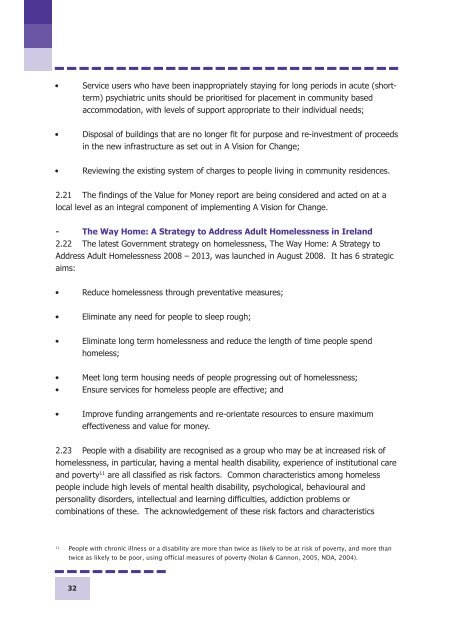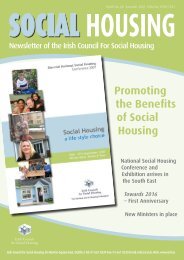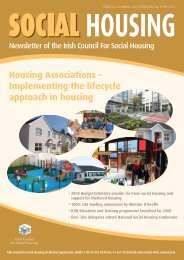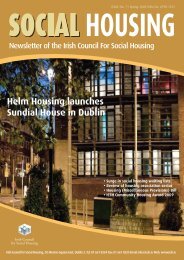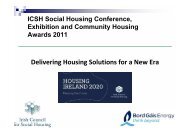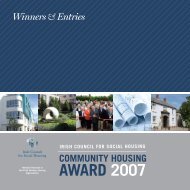National Housing Strategy for People with a Disability 2011 - 2016
National Housing Strategy for People with a Disability 2011 - 2016
National Housing Strategy for People with a Disability 2011 - 2016
You also want an ePaper? Increase the reach of your titles
YUMPU automatically turns print PDFs into web optimized ePapers that Google loves.
• Service users who have been inappropriately staying <strong>for</strong> long periods in acute (shortterm)psychiatric units should be prioritised <strong>for</strong> placement in community basedaccommodation, <strong>with</strong> levels of support appropriate to their individual needs;• Disposal of buildings that are no longer fit <strong>for</strong> purpose and re-investment of proceedsin the new infrastructure as set out in A Vision <strong>for</strong> Change;• Reviewing the existing system of charges to people living in community residences.2.21 The findings of the Value <strong>for</strong> Money report are being considered and acted on at alocal level as an integral component of implementing A Vision <strong>for</strong> Change.- The Way Home: A <strong>Strategy</strong> to Address Adult Homelessness in Ireland2.22 The latest Government strategy on homelessness, The Way Home: A <strong>Strategy</strong> toAddress Adult Homelessness 2008 – 2013, was launched in August 2008. It has 6 strategicaims:• Reduce homelessness through preventative measures;• Eliminate any need <strong>for</strong> people to sleep rough;• Eliminate long term homelessness and reduce the length of time people spendhomeless;• Meet long term housing needs of people progressing out of homelessness;• Ensure services <strong>for</strong> homeless people are effective; and• Improve funding arrangements and re-orientate resources to ensure maximumeffectiveness and value <strong>for</strong> money.2.23 <strong>People</strong> <strong>with</strong> a disability are recognised as a group who may be at increased risk ofhomelessness, in particular, having a mental health disability, experience of institutional careand poverty 11 are all classified as risk factors. Common characteristics among homelesspeople include high levels of mental health disability, psychological, behavioural andpersonality disorders, intellectual and learning difficulties, addiction problems orcombinations of these. The acknowledgement of these risk factors and characteristics11<strong>People</strong> <strong>with</strong> chronic illness or a disability are more than twice as likely to be at risk of poverty, and more thantwice as likely to be poor, using official measures of poverty (Nolan & Gannon, 2005, NDA, 2004).32


